Jump Ahead To:
TROLLING MOTOR BATTERY: INTRO
Kayak fishing is booming in popularity! This boom has caused a number of new kayak fishing accessories to come onto the market, which is great news for us! One of these is known as a Kayak Trolling Motor. We have ranked The 5 Best Kayak Trolling Motors for you, here!
Yes, trolling motors are just one of the new ways for kayak fishermen to power their kayaks across the water. Of course, like any motor, the kayak trolling motor will need a power source. Enter the Trolling Motor Battery, an awesome and critical kayak fishing accessory to which KFC has dedicated an entire Ultimate Guide! If you are looking to learn more about Trolling Motor Batteries, this KFC Ultimate Guide is the place for you. Ready to get started?
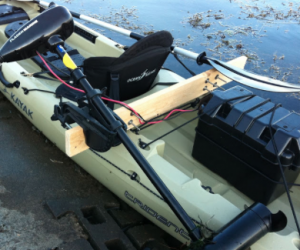
Trolling Motor Battery: Ultimate Guide
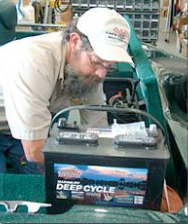
First, as an Amazon Associate, I earn from qualifying purchases.
KayakFishingCorner.com wanted to write an all encompassing guide about Trolling Motor Batteries after receiving a flood questions from our readers about the lack of information on the market about this particular kayak fishing accessory. We’ve written this Ultimate Guide to contain each and every important detail about the Trolling Motor Battery. To make sure we properly communicate this potentially complicated topic, we’ve organized this Ultimate Guide into a handful of logical categories. We start by going over some of the basic, yet tremendously important, information about Trolling Motor Batteries – What are they? Are they expensive? Can they be used in kayaks? Are they safe? And so on.
After that, we’ve posted one of our famous “how to” checklists that will serve as your reference guide for learning how to install and use a Trolling Motor Battery in your fishing kayak. Next, we’ve written a section detailing the top five most critical features that are truly “must haves” in any trolling motor battery that you might consider buying. We break each of these important features down one by one so that you can learn what exactly to look for and why it is so important that your trolling motor battery contain all five of these features.
After that, we’ve added a link to a product page for one of our favorite models of Trolling Motor Batteries. While there are many on the market, and several of them would be great choices, we know that the model we’ve linked to has performed well for us! We’ve also included a short section that details some of our own experience with trolling motor batteries. It is our hope that this section will help you learn from our own encounters – maybe you can duplicate some of our successes and avoid some of our mistakes! Time to dig in!
Parts of a Kayak Trolling Motor
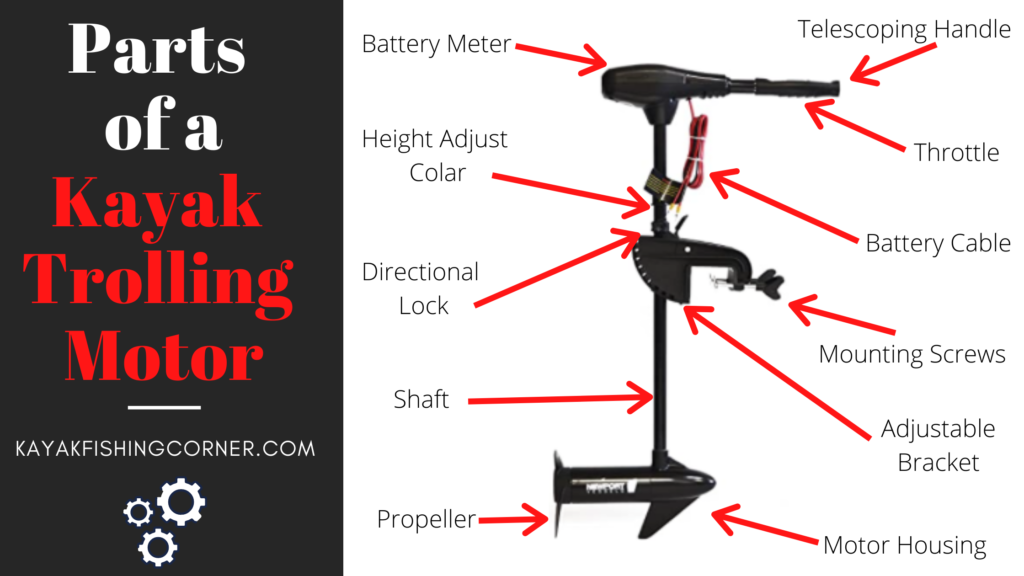
The Basics

Please note: This post contains affiliate links. An affiliate link means that we may earn advertising/referral fees if you make a purchase through our links.
Shortcut to the Best Trolling Motor Battery
To understand how a trolling motor battery works, you need to start with the basics. We have included a “slice” image of a battery (above) so that you could see what these products actually look like “on the inside”. Now that you’ve seen all of the pieces, let’s discuss how they work together against the backdrop of a much larger question – what is a trolling motor battery?
A battery is essentially a product that produces or releases power (in the form of electrons) through certain chemical based reactions. A typical battery will contain positive (+) and negative (-) terminals. The positive terminals are usually indicated by a red color, while the negative are usually indicated by a black color. At its most basic definition, a battery is merely an apparatus that allows for the storage and release of “energy”. Check out the very basic image of how a battery releases energy which is in turn used to power a particular item (below):
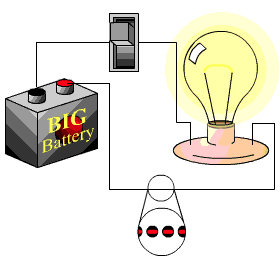
There are two different types of batteries (at least for our purposes). One is called a “starting” battery and the other is known as a “deep cycle” battery. The starting battery is like the one that you have in your car. It is used to push a large charge of power (for a short period of time) like when you are turning the key on your ignition. One key difference between this kind of model and a deep cycle model is that a starting battery isn’t engineered to be exposed to multiple discharges and recharges (referred to as “cycles”) – if you drain a starting battery over and over, you will significantly reduce its efficiency and life span.
Deep cycle batteries are opposite of starter batteries in many respects. These type of batteries provide a more sustained level of energy. This is why they are so popular for the marine and watercraft industry (you often see them in golf carts as well). Deep cycle batteries are engineered to put out significant power, but not the level that would be required to start a car (like the starter battery). As you might have inferred, deep cycle battery models are specifically engineered to be depleted/discharged time and time again without concern about causing damage to the efficiency or life span of the battery. This is one of the primary differences between it and the “starter” model.
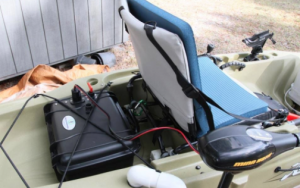
As you might have suspected, it is the deep cycle style of battery that we are interested in for serving as the trolling motor battery in our fishing kayaks. Deep cycle models have three primary advantages over “starter” style batteries, each of which makes this style better suited for kayak fishing. They are more durable, require less maintenance, and their efficiency is top notch.
Remember, the “starter type” will deliver a big jolt of energy, but this ability isn’t necessary for powering your trolling motor. Your trolling motor needs a stable energy supply readily available for an extended period of time. Deep cycle styles of battery are nearly maintenance free. How long a deep cycle battery is largely a function of how you use it (how frequently, how far do you discharge it, how quickly after use do you recharge it, etc.) and how well you maintain it. In general, however, you can expect that your deep cycle model can last for thousands of cycles or roughly 5 – 8 years. Of course, every model is a little different from the next!
How to Use a Trolling Motor Battery
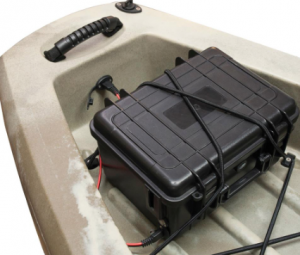
First, you’ll be happy to learn that installing and using a trolling motor battery doesn’t have to be a difficult task. However, it is very important that you familiarize yourself with the workings of your particular model of battery before you begin the process. Remember, every model of battery is a little bit different from the next, so make sure to follow the owner’s or user’s manual that has come with your particular battery! Failure to do so could cause you serious injury or even worse!
The checklist posted below lists several of the “main” steps to follow when working with a trolling motor battery of your own. This list should acquaint you with some of the “major” steps of the installation and use process. Importantly, we cannot list each and every step for each and every battery and, after referencing your owner’s manual, we want to encourage you to visit your local marine or battery shop if you are even the least bit uncertain about the installation process! Better safe than sorry!

- Locate and actually read the owner’s manual!
- Find every piece of equipment or gear that you’ll ultimately be attaching to your battery and locate the power switches.
- Turn all switches to the “OFF” position. Failure to do so puts you at extreme risk!!!!
- Connect the RED lead wires from the kayak trolling motor to the positive (+) battery terminal.
- Now, connect the BLACK lead wires from the kayak trolling motor to the negative (-) battery terminal.
- Red goes to red. Black goes to black.
- If you are getting power, your trolling motor’s display is probably lighting up or you might have heard a “beep” or other indication that the unit is connected to power.
- Be sure to locate the trolling motor battery in a protected location within your kayak.
- We put ours below the hull within a special piece of equipment known as a trolling motor battery box.
- The battery box helps cushion the battery from hard bumps and also shields the battery from inadvertent splashes of water.
- Even though the “deep cycle” model of battery is designed to be discharged and recharged (cycled) numerous times, it is suggested that you not discharge it below 80%.
- The “life” of your deep cycle battery is directly correlated to how deep the battery is discharged each time.
- For example, discharge it to 50% each weekend and it will last roughly twice as long as if you had depleted to 80% each weekend. That’s a very significant difference in life span!
- We usually target a 50% discharge for regular use. It is our experience that this is the “easiest” on the battery while not causing inconvenience to us.
- Sure, we might go to 80% on a particular outing and that is perfectly fine! You just don’t want to get into the practice of doing this.
- Perhaps it is counter intuitive, but you also don’t want to discharge too lightly (5% or so) because a light discharge can actually harm battery life and efficiency over time as well! As with anything else, find the middle ground!
Important Features
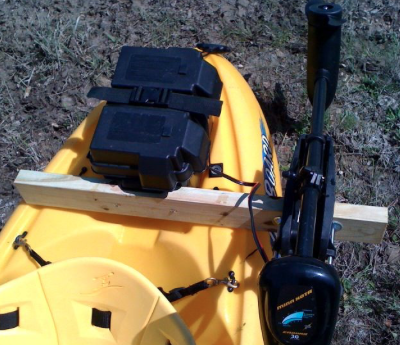
Deep cycle batteries have been on the market for a significant period of time. This is great for kayak fishing enthusiasts because it means that the market has had time to sort out the good models from the bad. Also, the price has come down to a more reasonable level (kayak fishing is expensive, we’ll take any price breaks we can get)!
There are many high quality manufacturers who offer batteries that would be perfect selections to power your kayak’s trolling motor. Instead of focusing on a particular manufacturer or model (at least at this point) we’d like to go over of the most important features that you need to find in the trolling motor battery that you ultimately decide to purchase. Buying a battery with 1 or 2 of the features alone is not going to provide you the benefits that one offering the combination of the 3 will provide. Let’s take a look at each of these top 3 features in detail so you can understand more about them and why each is so important for kayak fishing purposes.

Deep Cycle Style Only. We discussed it pretty thoroughly above, but we need to reiterate that you don’t want a battery, at least one that you intend to use as your trolling motor battery, unless it is deep cycle style (as opposed to “starter” styles of battery). Only this kind of battery can be discharged and recharged time and time again without concerns about causing damage to the battery.
Running routine discharges like this on a starter battery would cause for it to wear out in mere months – not a good result! You’ll want a battery that can be “cycled” at least 500 times to a 50% discharge (depletion of battery) before it begins to wear out. Remember, you can discharge these models to 80%, or even further, but 50% is ideal in terms of preserving efficiency and battery life!

Temperature and Discharge Rate Considerations. Remember that a trolling motor battery isn’t going to exist in a vacuum. There are many external factors that will impact the performance, discharge and lifespan of the battery. Many have been designed to perform in a wide range of temperatures – a quality that is obviously important given that kayak fishing is a year round sport!
You should confirm that your model can be subjected to temperatures as low as 5 degrees and as high as 115 degrees. Make sure to consider the presence of absence of sunlight on your temperature (for example, an all black battery exposed to direct sunlight could exceed 115 degrees in mere moments – keep your battery shielded from this kind of exposure)!
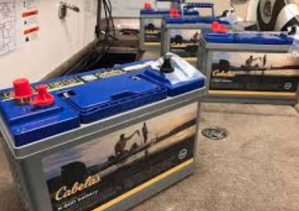
Remember that it is important to recharge your battery promptly upon getting off of the water. Avoiding long periods in a discharged state will help your battery have a longer life span. If you make it a habit to recharge your battery as soon as you get off the water, you’ll be more likely to avoid a scenario where your battery is harmed or, even worse, where you connect your devices and see that no charge is being pushed because the battery is too far depleted!
Look for a battery that has a “high pack” design. Deep cycle models with this construction have a larger “charge acceptance”. Not familiar with that term? A charge acceptance is the capability of the trolling motor battery to receive and hold energy. It takes into account external factors as well, like temperature, charging voltage, number of prior charges.
Durable Design; Low Maintenance. This more than any other feature is important to consider. You don’t want to be replacing your trolling motor batteries too frequently. Not only is this expensive (these type of batteries can range anywhere between $150 – $550), it is a pain in the butt and is bad for the environment.
You need to make sure that your battery is durable enough to withstand the realities of kayak fishing. Your battery is going to bounce around or otherwise be subject to bumps and bangs as the kayak moves against the waves and currents. If these type of jolts impact the performance of the battery, you could be left far from shore with a busted battery!
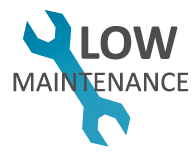
In terms of maintenance, we’ve had good luck with AGM (Absorbent Glass Mat) models, as this particular feature is designed to be low maintenance. With AGM, you don’t have to check water levels or bother with cleaning terminals. Simply put, it is just that much more user friendly than its counterparts.
Also, maintenance and durability seem to go hand in hand. We look for trolling motor batteries that are housed in protective reinforced plastic casings. This housing adds a second layer of protection and durability. Of course, for a bit of a “belt and suspenders” approach, you can (and should) store the battery in a trolling motor battery box. These are fairly common on the aftermarket and are typically built to handle 27″ in size.
Buy the Best Trolling Motor Battery
(Commissions Earned)
Remember that there are many suitable models of trolling motor battery on the market. The one that we typically recommend to our readers, however, has been linked to above. This is the model that has proven to be reliable for us in our own kayak fishing experiences so we feel comfortable suggesting that you give it a try. Maybe our recommendation will save you from having to do hours of research on your own, instead relying on someone who has already had a good experience with a particular model!
This deep cycle trolling motor battery is known as a Sealed Lead Acid ( “SLA” ) model, a feature allowing for it to be quickly and easily recharged all with significantly fewer requirements for maintenance when compared to a number of its competitors. This model is designed to be“spill proof”, meaning that you can install it in differing positions or angles without worry about inadvertently causing harm to the battery’s efficiency or performance. When you are needing to get creative with where and how to install your kayak trolling motor battery, a “spill proof” design will prove to be invaluable!
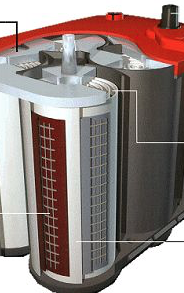
We like that the discharge rate on this model is quite high. Remember that the “discharge rate” is a way of measuring the battery’s speed of discharge relative to its maximum capacity. Basically, the “discharge rate” it is a way of describing how quickly (or slowly) the battery becomes depleted while you are using it!
Most importantly of all, if you think back to the very first part of this article, we like that this particular model of trolling motor battery is “deep cycle”, meaning that it can be drawn (discharged) all the way down, then recharged (“cycled”) time and time again without harming its efficiency or life span!
My Experience

I will admit that I was probably one of the last people on the planet who ever envisioned that he would be participating in kayak fishing with a kayak with an electric motor. I was always of the belief that there was one way, and only one way, to power a kayak and that was by kayak paddles! I don’t know what my hesitation was relative to giving an electric kayak a try but, after some pestering from a friend, I finally gave it a shot!
I immediately fell in love with the convenience that the electric motor provided me. Not only did it allow me to get from location to location more quickly, it allowed me to navigate up river or into tight channels without fear of becoming “stuck”. I could simply throw the kayak motor into reverse and back right on out. Also, my fears about mechanical “noise” from these motors was misguided. I had assumed that they were noise like their gas powered cousins and that this noise would take away from the serenity of kayak fishing. I was wrong. These motors are designed to be “run quiet” and, after just a few minutes, I forgot that they generated any noise whatsoever!
TROLLING MOTOR BATTERY: CONCLUSION

We hope KFC’s Trolling Motor Battery Ultimate Guide has proven to be a helpful resource for assisting you in your effort to learn about these awesome pieces of kayak fishing gear. It is only so often that one singular product (when coupled with a trolling motor, of course) can make such an immediate impact upon its owner’s ability levels! This is certainly the case with a trolling motor battery and a high quality kayak trolling motor!
If you’ve read this Ultimate Guide and feel that you still have questions about the Trolling Motor Battery, we’d ask that you consider posting on the Comments board below. KFC’s Comments board is a great free recourse for kayak fishing enthusiasts to interact and share free tips and tricks with one another. Also, we read and reply to every comment, and love interacting with this community. Odds are, if you have a kayak fishing question, one of the thousands of community members who routinely visit this website will be able to answer it for you! Who knows – you might be able to provide some answers of your own!
Have you ever considered participating in a kayak fishing tournament?
Comments
Were you familiar with Trolling Motor Batteries before reading this Ultimate Guide? Have you used one on a kayak fishing outing? How did it perform for you? Did you notice that it, combined with the trolling motor itself, allowed for a much less tiring kayak fishing experience? Did it actually improve your results on the water? Did you learn any tips or tricks during the installation or use process that you’d like to share with your fellow kayak fishing addicts?
Please share your story with us by posting below! We love interacting with the kayak fishing community and our free Comments board is one of the internet’s premier resources for sharing your story – and perhaps learning a thing or two. See you on the water!

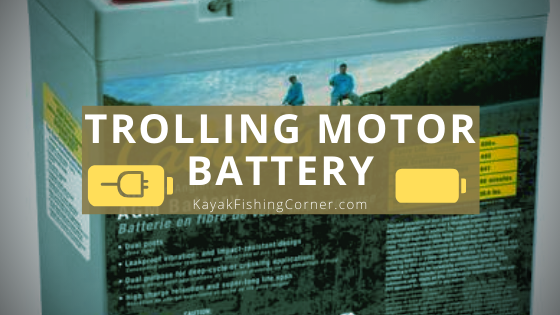

Thank you for this write up! I wasn’t sure that these kind of batteries existed!
Yes! Many people think that batteries like this are for cars! Actually, these “deep cycle” batteries are appropriate for watercraft (like your kayak and its trolling motor) but they wouldn’t work for your car (at least not very well)! Good luck on the water!
David Scott
Thank you! This had exactly the information I was looking for!!
Glad we could help out, Sherrie! Trolling motor batteries are becoming more and more available on the marketplace. We are glad to see that there is a wide selection to fit the various kayak trolling motor makes and models!
I used to use kayak paddles, way too tiring! Once I found out about trolling motors, it wa ms really obvious that installing one on my kayak was the right choice! This is a good battery too, I have used it on my river kayak for a couple years!
Dave –
Simply put. Trolling motors are a heck of a lot easier than paddles! Paddles have their place, of course, but there truly isn’t much downside to using a trolling motor with an efficient battery. The longevity is there, the speed and power is well suited for fishing, and the noise level is kept to a minimum! I was hesitant to try one out too, but I’m glad that I finally did! You sound like you are too!
Thanks for posting!
DS
Can I use this kind of trolling motor battery year after year? Or does it run out of juice?
Hi Larry!
Yes! These type of batteries are known as “deep cycle”, meaning that they can be drained, recharged and drained again, all without harming their performance! Once I discovered the Best Trolling Motor Battery, I’ve used it for going on 3+ years. I’ve been very impressed with the reliability. You can use them rain or shine, hot or cold. Just make sure you store the battery inside and out of the sun when you are not using it. Doing so will increase its longevity even more!
Keep on fishing!
-DS